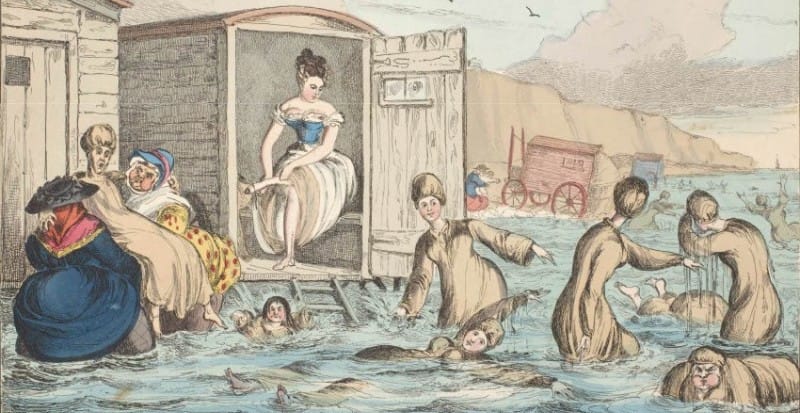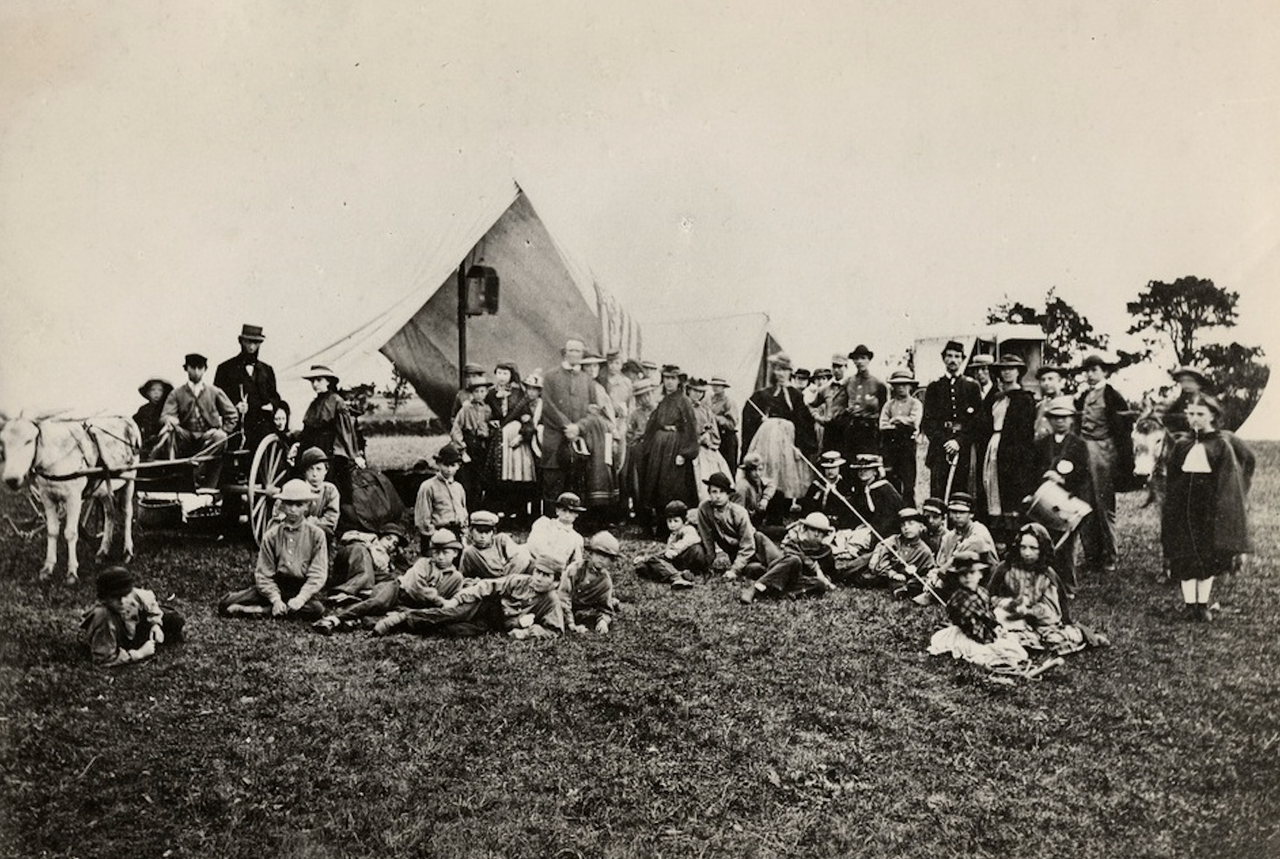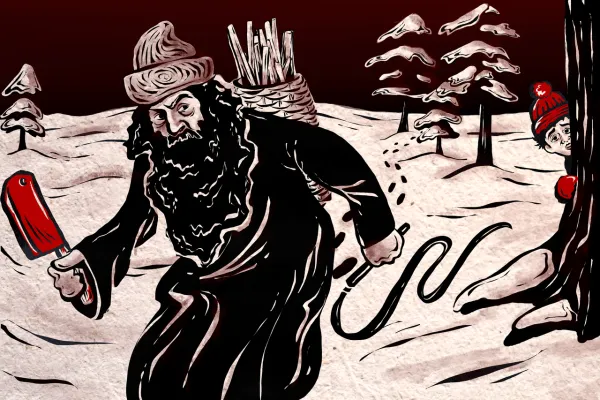That time Ben Franklin jumped naked into the Thames river

From Literary Hub: "It was a fine early summer afternoon in England, and the port at Chelsea was just slipping out of sight when Benjamin Franklin—at the urging of his fellow passengers—kicked off his buckled shoes and tossed aside his heavy jacket. John Wygate, a fellow printer whom Franklin had taught to swim, had been regaling the gentlemen aboard the ferry with stories of Franklin’s fishlike agility in the water and the peculiar aquatic tricks he could perform. They had spent the morning viewing taxidermied crocodiles and rattlesnakes at Don Saltero’s curiosities shop and weren’t ready for the day’s amusements to end, even as they headed back to Blackfriars. Franklin likely put on a good show of modesty, demurring at first to the group’s excited requests for a demonstration, but was no doubt secretly pleased as he undressed for his dip in the Thames—he loved both an audience and any excuse to get in the water."
This computerized love-letter generator was a precursor to ChatGPT

From JSTOR Daily: "In the early 1950s, small, peculiar love letters were pinned up on the walls of the computing lab at the University of Manchester. The history behind them is even stranger; examples of the world’s first computer-generated writing, they’re signed by MUC, the acronym for the Manchester University Computer. In 1952, decades before ChatGPT’s computer generated writing was integrated into mainstream media outlets, two gay men—Alan Turing and Christopher Strachey—essentially invented AI writing. Alongside Turing, Strachey worked on several experiments with Artificial Intelligence: a computer that could sing songs, one of the world’s first computer games, and an algorithm to write gender-neutral mash notes that screamed with longing."
The surprisingly contentious history behind the invention of Whac-A-Mole

From Mel magazine: "It was November 1976, and I was at the first IAAPA I had ever attended. I brought a talking animatronic head to the convention — that was getting a lot of interest, but a lot of people also wanted me to build specific things for them, because I’m really an inventor. So I built a talking bear and things like that, and one guy had a request for me. His name was Denny and he showed me this game a few aisles over. It was the first mallet game of its type, but it didn’t work. It was being shown by some Japanese men. In the game, there were some kind of animals that jumped out of holes, so that was the inspiration. I was commissioned by Denny to build a game inspired by that, and I came up with the name “Whac-A-Mole.” I had a mole sculpted by an artist who I knew and then I had a fiberglass mold made. I made an air-operated game using air cylinders, so that when air pushed up the moles, the air acted as a cushion, so when you hit the mole, it didn’t break the game. It was very durable."
(Editor's note: If you like this newsletter, please share it with someone else. And if you really like it, perhaps you could subscribe, or contribute something via my Patreon. Thanks for being a reader!)
Leopold and Loeb, the thrill killers of the 1920s who pulled off the crime of the century
:focal(700x527:701x528)/https://tf-cmsv2-smithsonianmag-media.s3.amazonaws.com/filer_public/f2/66/f2669c1d-a828-44b1-a2df-fc0319305d83/smithmag-podcast-s02-ep10-leopoldloeb-article.jpg)
From the Smithsonian: "At the time of the murder, Leopold was 19 and Loeb was 18, and they were both members of German Jewish immigrant families that were very wealthy and lived in Chicago, and they both were very intelligent and had excelled in school from a young age. Leopold was enrolled at the University of Chicago, and Loeb was preparing for his first year there as more kind of like graduate studies. And, apparently, they didn’t actually really like each other at first, but once they realized that they got along well, things definitely escalated from there. It became this very intense kind of romantic, sexual partnership. Loeb was very much interested in committing crimes as something for the thrill of it. Leopold viewed himself as a Nietzschean Superman. He had taken some classes in philosophy and learned about this concept of individuals who were so intelligent that they were above all the rest of the population and they also were above the law, so they could commit crimes without any repercussions."
The anxious history behind the American summer camp

From Atlas Obscura: "In 1861, weeks after Confederate troops fired the first shots of the Civil War, educator and abolitionist Frederick Gunn assembled his own troops—about 30 boys and a dozen girls who were students at his Washington, Connecticut, boarding school. Gunn, an early proponent of outdoor education, had led students on camping trips before, but this time he had something a little more regimented in mind. Like the gathering Union forces, they would march—42 miles to be exact—to a beach on the Long Island Sound, where they would set up camp, waking in the morning to a bugle call and falling asleep under the stars after singing patriotic songs by the fire. During the day, between fishing and foraging, they would perform military drills. The Gunnery Camp, as it came to be known, was so successful that Gunn made a tradition out of it."
Thousands of miles apart, trees drop their fruit at the same time

From Quanta: "Each summer, like clockwork, millions of beech trees throughout Europe sync up, tuning their reproductive physiology to one another. Within a matter of days, the trees produce all the seeds they’ll make for the year, then release their fruit onto the forest floor to create a new generation and feed the surrounding ecosystem. It’s a reproductive spectacle known as masting that’s common to many tree species, but European beeches are unique in their ability to synchronize this behavior on a continental scale. From England to Sweden to Italy, somehow these trees “know” when to reproduce. But how? A group of ecologists has now identified the distinctive cue that, along with balmy weather, triggers the phenomenon. Their analysis of seeding data suggests that European beech trees time their masting to the summer solstice and peak daylight."
This baby stroller that attaches to a bicycle was invented 100 years ago
Designed a hundred years ago pic.twitter.com/yWVzpmK8u2
— Historic Vids (@historyinmemes) July 2, 2024
Acknowledgements: I find a lot of these links myself, but I also get some from other newsletters that I rely on as "serendipity engines," such as The Morning News from Rosecrans Baldwin and Andrew Womack, Jodi Ettenberg's Curious About Everything, Dan Lewis's Now I Know, Robert Cottrell and Caroline Crampton's The Browser, Clive Thompson's Linkfest, Noah Brier and Colin Nagy's Why Is This Interesting, Maria Popova's The Marginalian, Sheehan Quirke AKA The Cultural Tutor, the Smithsonian magazine, and JSTOR Daily. If you come across something interesting that you think should be included here, please feel free to email me at mathew @ mathewingram dot com



